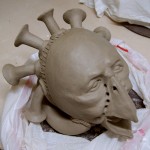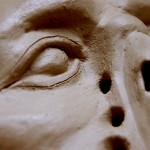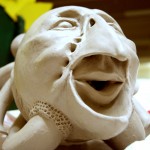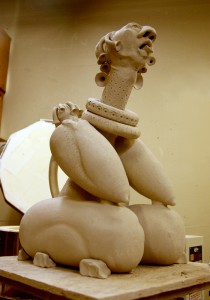It is a massive celebration of one extra cup of coffee, but the fact that “M” is for Mugphlute made it through a year of monthly posts is fairly unremarkable. Thanks to the many visitors who are interested in ceramic musical instruments and my recent efforts to explore the world of whistling water vessels. There are a few people who visit the site regularly and I appreciate the traffic. It does encourage me to post.
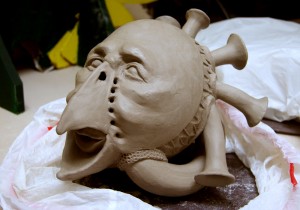 This is the latest effort to emulate an ancient whistling vessel. Fowl Mask is a bottle within a bottle. The two separate bottle chambers act much like Peruvian water jars where water passing from one vessel to the other pushes a column of air toward a whistle construction (beneath the mouth and beak). There is more work to be done on this piece and drying time before the first firing may take several weeks.
This is the latest effort to emulate an ancient whistling vessel. Fowl Mask is a bottle within a bottle. The two separate bottle chambers act much like Peruvian water jars where water passing from one vessel to the other pushes a column of air toward a whistle construction (beneath the mouth and beak). There is more work to be done on this piece and drying time before the first firing may take several weeks.
I will be experimenting with a new graphic transfer technique that involves powder-based photo copies and Mason stain. There will be more on that later.
For now, Happy Blogversary!
